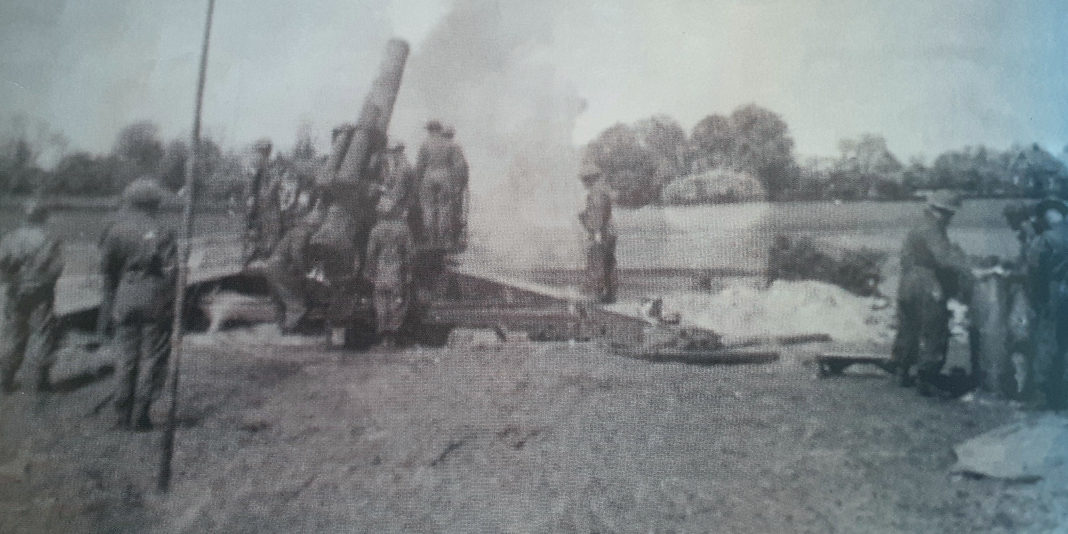- Quote: ‘The shells we used were 360lb and had a 14 mile range’ – WW2 Vet Jim Jolly
In a Leader exclusive Andrew Atkinson looks back on the memoirs of WW2 Veteran Jim Jolly, whose son Graeme lives in Los Montesinos, in Part 2 of a three-part series, in the wake of the 75th anniversary of VE day on May 8 having taken place.
Jim Jolly died in April 2009, and his wife, Mary, passed away in 2011.
CODE named ‘Operation Overlord’ the Allies landed on June 6, 1944, at five beaches in Normandy.
Previously the British 6th Airborne Division had seized their objectives and captured key bridges over the Caen Canal and Orne River.
Allied planes pounded the Nazi defenders and dropped thousands of paratroopers behind German lines the night before the sea borne landings.
Local French Resistance forces, alerted to the imminent invasion, engaged in behind the lines sabotage and combat against the occupying Germans.
At 6.30am on D-Day the greatest invasion in world history took place. 156,000 American, British and Canadian troops subsequently met resistance from the German forces defending the area, but were able to punch inland, securing safe landing zones for reinforcements.
It is believed 3,000 British and Canadian troops and 2,500 American troops were killed on D-Day.
The invasion marked the beginning of the end for Hitler’s Nazi Germany, but the end of the entire Normandy Campaign, nearly 425,000 Allied and German troops were killed, wounded or missing.
When Jim Jolly arrived in France on June 26, the Allies were still meeting fierce German resistance: “I did look over to Britain and think ‘Am I ever going to see you again’, but we were too occupied with deep-waterproofing all the vehicles and then digging in for the night,” said Jim in his memoirs.
Having recovered from jaundice, Jim returned to England to fetch heavier guns, which were used to shell a pocket of 20,000 Germans who continued to resist Dunkirk until the end of the war.
“We weren’t allowed cameras but one of our officers took a picture of one of our super heavy guns which we used to fire from DuPanne on a pocket of German resistance in Dunkirk.
“At the time I was the observation post directing their fire. The shells we used were 360lb and had a 14 mile range.
“After the war the officer sent all of us the photograph,” said Jim.
As a radio operator, Jim had to learn the Morse code, which he could still do, post war years: “I don’t know why I can remember it, after all this time.
“By the time I arrived in France the Germans had cracked our codes, so we didn’t use it,” said Jim.
Jim returned to DuPanne, almost 30 years after the war, where he had fond memories of the French, Belgium and Dutch people: “Everyone was very friendly,” said Jim.
*In Part 3 of Normandy Veteran Jim Jolly’s memoirs he talks about having no animosity towards the Germans; guarding a prison camp and SS officers, he described as ‘vile’.
The end of WW 2; demob; joining the Military police. Moving to Cleator, Cumbria, with his wife Mary and daughter Linda. And returning to France, as part of the 1939-45 veterans.





